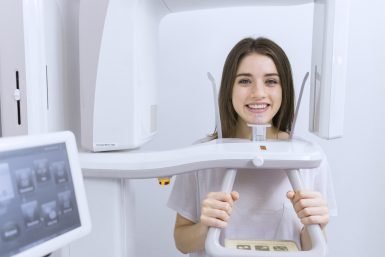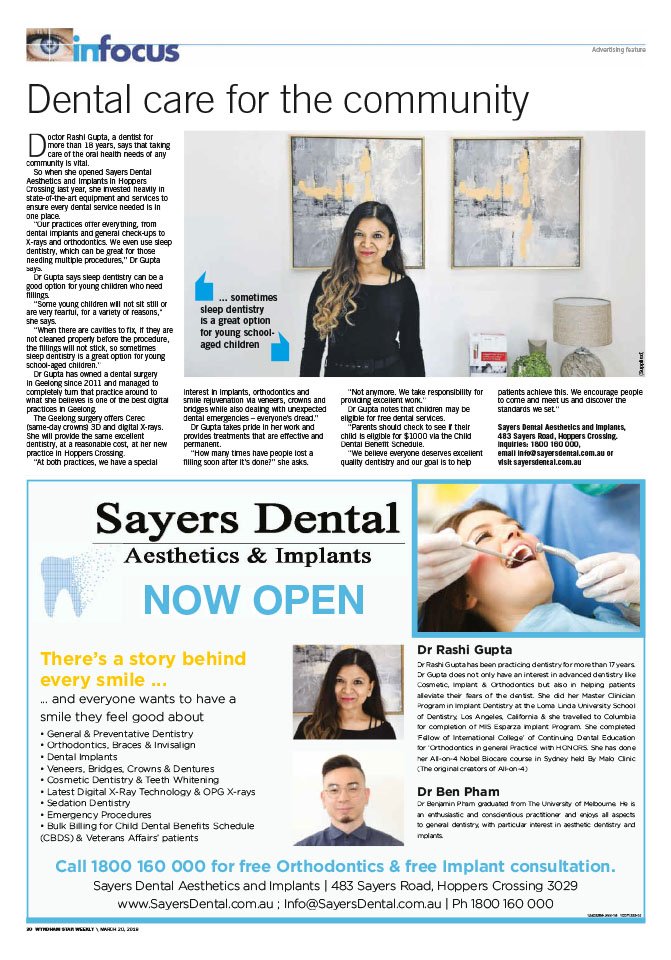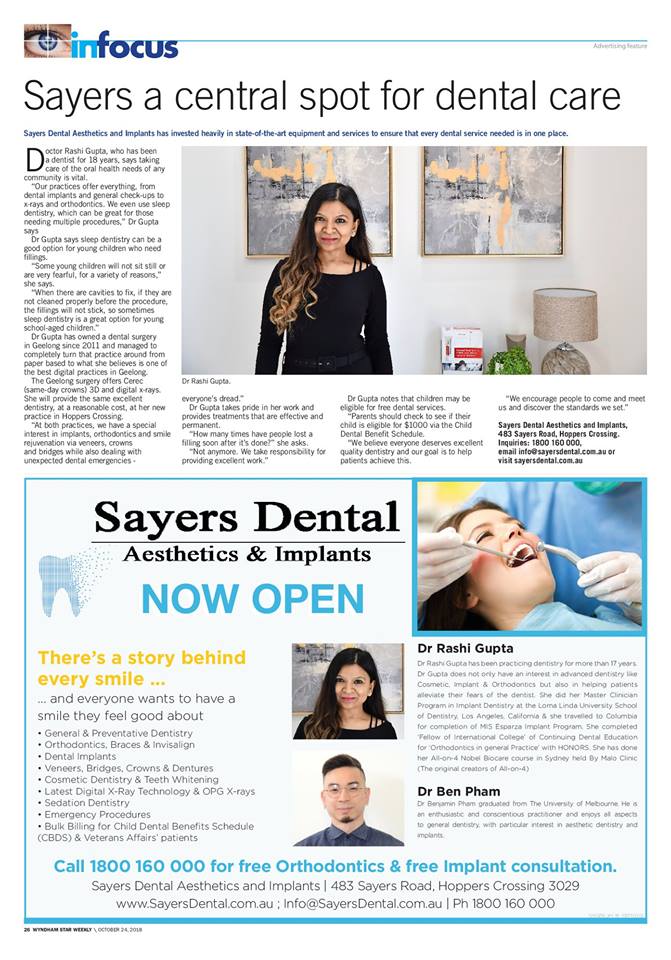How safe are dental X-rays, and when are they unsafe?
 One of the main reasons patients come to Sayers Dental Aesthetics & Implants is so we can find dental problems before they become severe and expensive issues.
One of the main reasons patients come to Sayers Dental Aesthetics & Implants is so we can find dental problems before they become severe and expensive issues.
While routine examinations can ferret out common issues, some potentially dangerous problems aren’t visible to the naked eye.
This is why dentists consider X-rays a useful tool for detecting and diagnosing. X-rays can discover the very smallest problems while they are more easily treatable.
This includes some types of tumours, oral infections, and cavities.
Thanks to dental X-rays, we can diagnose and treat dental problems long before they become more serious.
With the early detection that X-rays allow, you can get the treatment you need before problems have a chance to develop.
But X-rays are a form of radiation, and that causes some patients to question their safety.
Let’s take a look.
What are X-rays?
X-rays are an imaging technology that allows medical practitioners to see teeth, bones, and organs within the body.
Overall, X-rays are quick, painless, and safe, particularly compared to other methods of examining teeth, bones, and internal organs.
Radiation is sent through the body, and film plates record the results in black and white.
How much radiation does an X-ray contain?
First of all, it is essential to note that as the threat of radiation has become clear, and technology has advanced, so have dentists’ protective practices, including lead aprons and thyroid protection.
At the same time, the amount of radiation used has declined dramatically.
To put dental X-rays into perspective, let’s place them alongside other environmental sources of radiation and see how they compare.
A single digital dental X-ray has about 0.1 mrem of radiation, and a set of four bitewings has about 0.4 mrem.
Compare that to:
- Smoking cigarettes: 1,300mrem annually
- Background radiation from soil: 35mrem per year
- Transcontinental flight: 2-4mrem
- Natural gas used for heating and cooking: 9mrem annually
- Drinking water: 5mrem annually
These comparisons make it clear how low the level of radiation is for an X-ray.
For an even more ridiculous comparison, consuming ten bananas exposes you to just as high a level of radiation as one X-ray does! And no one seems to be giving up on bananas!
So, dental X-rays do expose you to radiation. But the potential benefits of X-rays outweigh the risks, as our previous list of what they can uncover reveals.
How Often Should You Get an X-ray?
There is no one answer, as your dental and medical history are involved in this decision. Many of us will receive X-rays annually, or even less, while others will have conditions that need to be followed.
Typically, if you choose a new dentist or haven’t visited in a long time, X-rays are an essential part of an initial examination that establishes a dental baseline for comparison as time passes.
Who might need more X-rays?
- Children get more X-rays because their jaws and teeth are growing quickly, changing in ways that need to be observed. Because children’s teeth are smaller, they can fall prey to decay much more rapidly.
- Adults with multiple dental restorations.
- People who consume a lot of sugar.
- People with periodontal (gum) disease that causes bone loss or bone loss due to missing teeth.
- People who have a dry mouth.
- Due to their higher risk of developing periodontal disease, smokers should monitor any bone loss that results from the condition.
How Safe Are Dental X-rays?
Exposure to any radiation can be harmful. Fortunately, the radiation exposure you receive from dental X-rays is very low, and they can significantly reduce the risk of illness and injury.
If you are concerned about X-rays, tell us how often X-rays are needed and why they are being taken. We can work together to answer your questions.
Who should NOT get X-rays?
Pregnant women
Pregnant women should avoid X-rays until after birth. This is to protect the health of the fetus, which is much more susceptible to radiation problems than grown adults.
The speed at which a fetus changes at the cellular and DNA level makes X-rays particularly dangerous. You should have regular dental check-ups during pregnancy.
Just make sure your Hoppers Crossing dentist knows about your condition.
Children
This is an arguable one. There’s no such thing as a completely safe exposure level; radiation is cumulative over your lifetime.
Children may be vulnerable since they’re small and their cells are dividing rapidly. Discuss this with your dentist.
Smiles in Hoppers Crossing!
Sayers Dental Aesthetics & Implants believes everyone deserves high-quality dentistry, and we are here to help you achieve this.
We are a multi-surgery practice caring for the oral health needs of our local communities.
Our dental practice focuses on providing patients with exceptional General, Orthodontic, and Implant dentistry.
To learn more, call us at (03) 9749 1178 or request your appointment online.
We are located at 483 Sayers Road in Hoppers Crossing.
NEED DENTAL ADVICE? JUST ASK US A QUESTION. (replies during business hours)
Book Your Dental Consultation Today!
- We accept EFTPOS, all major Credit Cards as well as HICAPS, MBF, Medibank Private, HCF & All major health funds.
Sayers Dental
Aesthetics & Implants
Address: 1/483 Sayers Road
Hoppers Crossing, VIC 3029
Phone: (03) 9749 1178
Email: admin@sayersdental.com.au
OPENING HOURS
Monday: Closed
Tuesday: 9:00 AM to 5:00 PM
Wednesday: Closed
Thursday:9:00 AM to 5:00 PM
Friday: 10:00 AM to 6:00 PM
Saturday: 9:00 AM to 4:00 PM
Sunday: Closed
PARKING/PUBLIC TRANSPORT
There is ample free car parking onsite
LOCATION
Sayers Dental Aesthetics & Implants is located in Hoppers Crossing, only a few min away from Thomas Carr College.
Hoppers Crossing dentist also serving local communities in Tarneit, Truganina, Werribee, Werribee South, Williams Landing, Wyndham Vale, Laverton, Laverton North, Altona, Altona Meadows, Altona North, Point Cook, Seabrook, Sanctuary Lakes and Alamanda.


